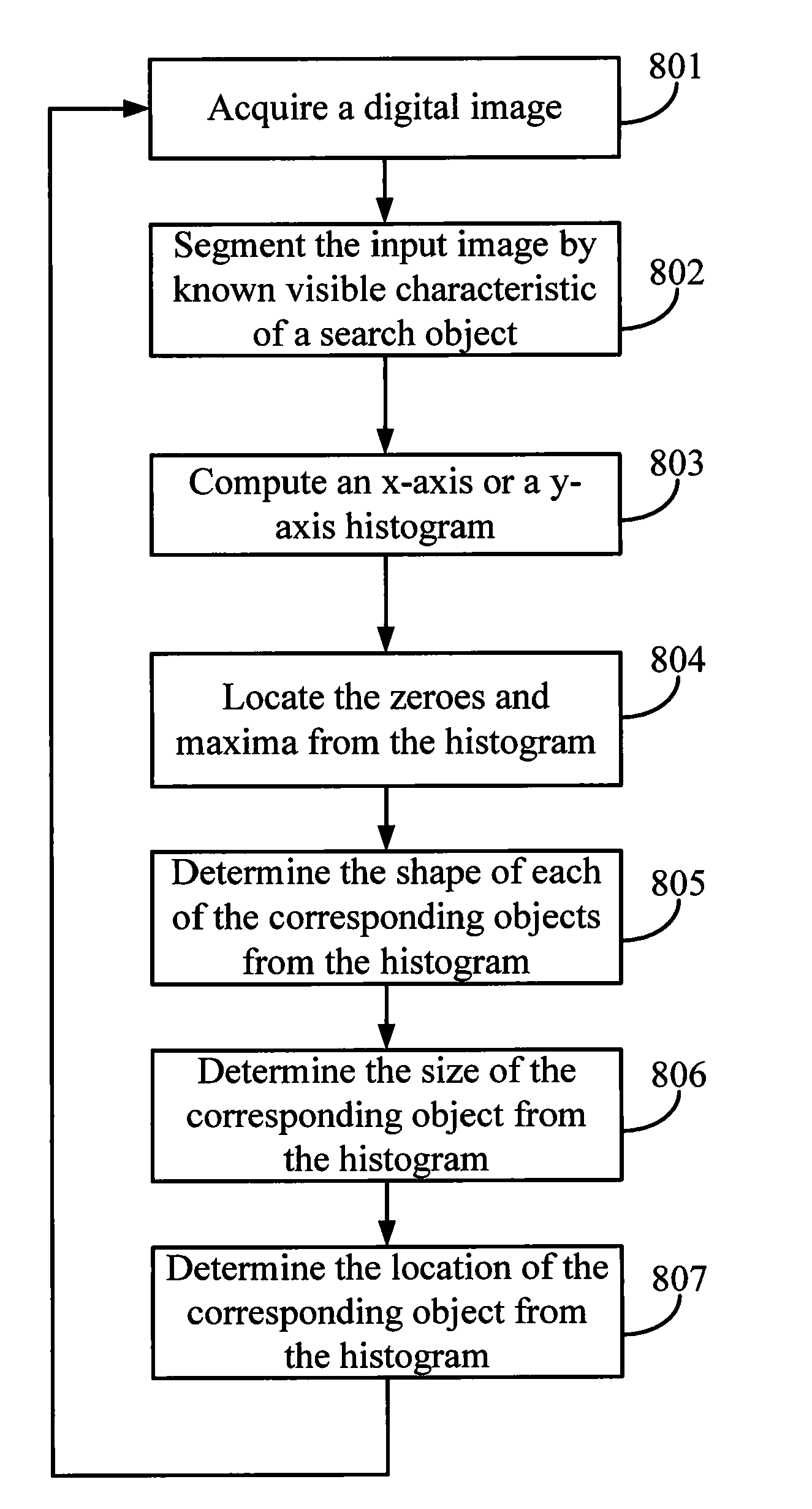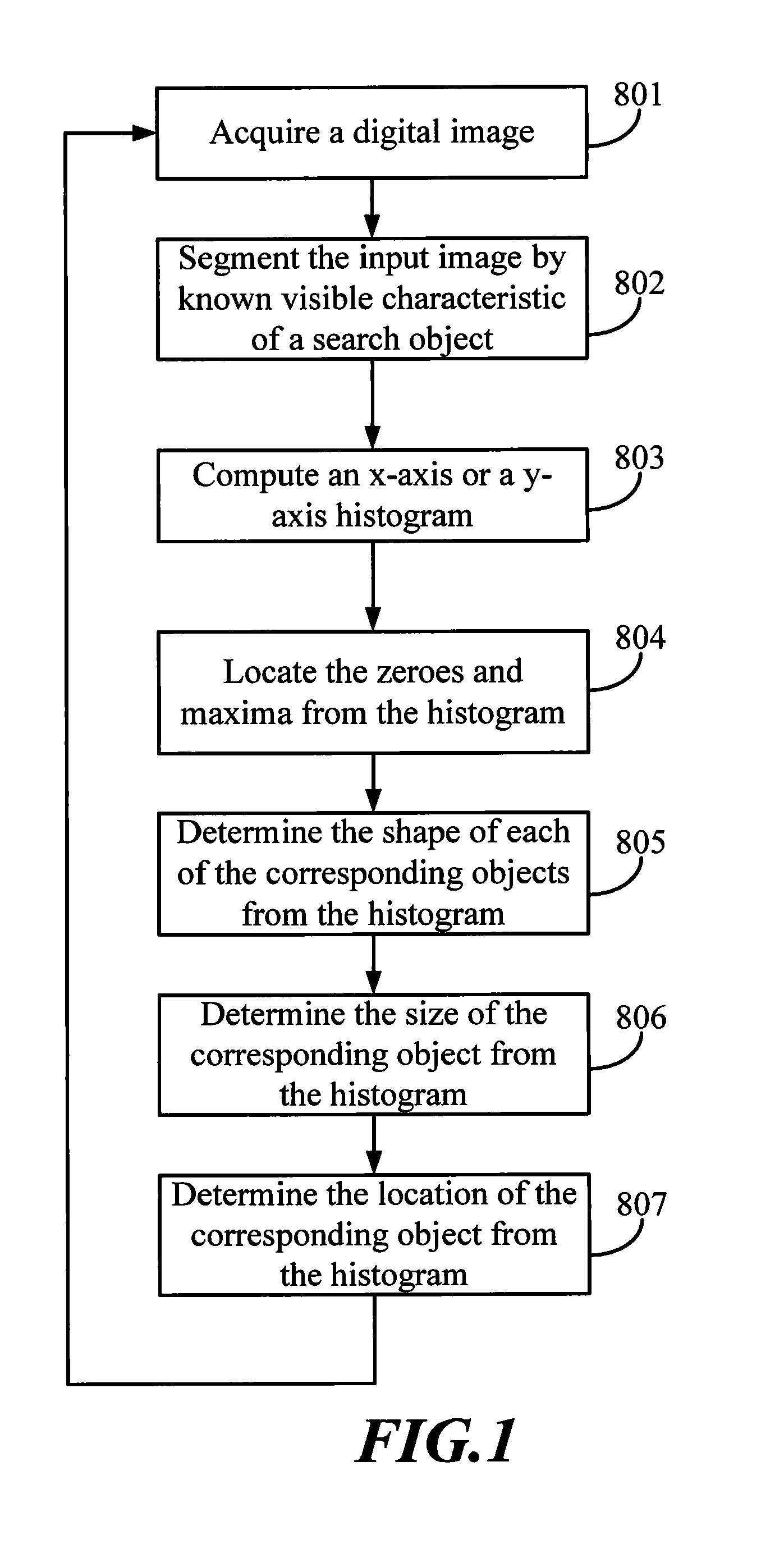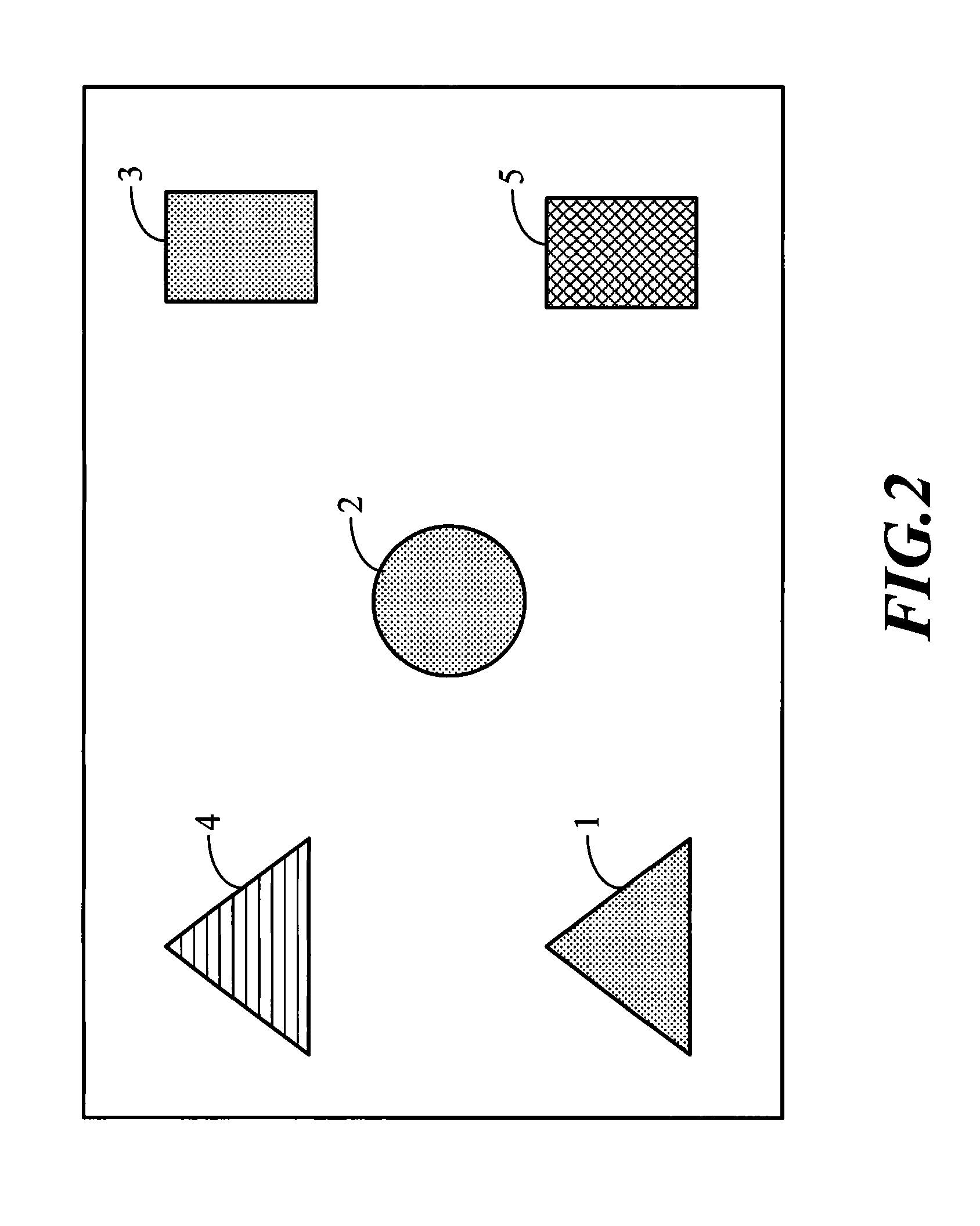Method for recognizing objects in images
a technology for objects and images, applied in the field of methods for recognizing objects in images, can solve the problems of difficulty in distinguishing actual image color variations from color variations, requiring a series of complex computations, and not using prior information concerning known image color content in segmentation methods
- Summary
- Abstract
- Description
- Claims
- Application Information
AI Technical Summary
Benefits of technology
Problems solved by technology
Method used
Image
Examples
first embodiment
[0125]FIG. 2 is an image containing five objects in the present invention.
[0126]FIG. 3 is a segmented image of FIG. 2 (only the red objects are kept).
[0127]FIG. 4 is an x-axis histogram for FIG. 3 by counting the number of red pixels in each column in the x-axis of FIG. 3.
[0128]FIG. 5 is a y-axis histogram for FIG. 3 by counting the number of red pixels in each row in the y-axis of FIG. 3.
second embodiment
[0129]FIG. 6 is a color image containing several objects for the present invention.
[0130]FIG. 7 is a segmented image of FIG. 6 (containing only the red objects).
[0131]FIG. 8 is an x-axis histogram for FIG. 6 by counting the number of red pixels in each column along the x-axis of FIG. 6.
[0132]FIG. 9 is a y-axis histogram for FIG. 6 by counting the number of red pixels in each row along the y-axis of FIG. 6.
List of reference numerals 1 Red triangle 2 Red circle 3 Red rectangle 4 Green triangle 5 Blue rectangle 6 Traffic sign 61 Red outer ring 62 White inside 63 Black number 71 Red flowers 101 Triangular figure1011 Curve / straight line1012 Curve / straight line 102 Triangular figure 201 Curved figure2011 Curve 202 Curved figure 301 Rectangular figure3011 Curve / line3012 Curve / line3013 Curve / line 302 Rectangular figure 501 Centrally concave pattern5011 Curve5012 Curve5013 Curve5014 Curve 502 Red flower pattern 503 Red blossom patternA, C, D, F, G and J ZeroesB, E, H and I Ma...
PUM
 Login to View More
Login to View More Abstract
Description
Claims
Application Information
 Login to View More
Login to View More - R&D
- Intellectual Property
- Life Sciences
- Materials
- Tech Scout
- Unparalleled Data Quality
- Higher Quality Content
- 60% Fewer Hallucinations
Browse by: Latest US Patents, China's latest patents, Technical Efficacy Thesaurus, Application Domain, Technology Topic, Popular Technical Reports.
© 2025 PatSnap. All rights reserved.Legal|Privacy policy|Modern Slavery Act Transparency Statement|Sitemap|About US| Contact US: help@patsnap.com



